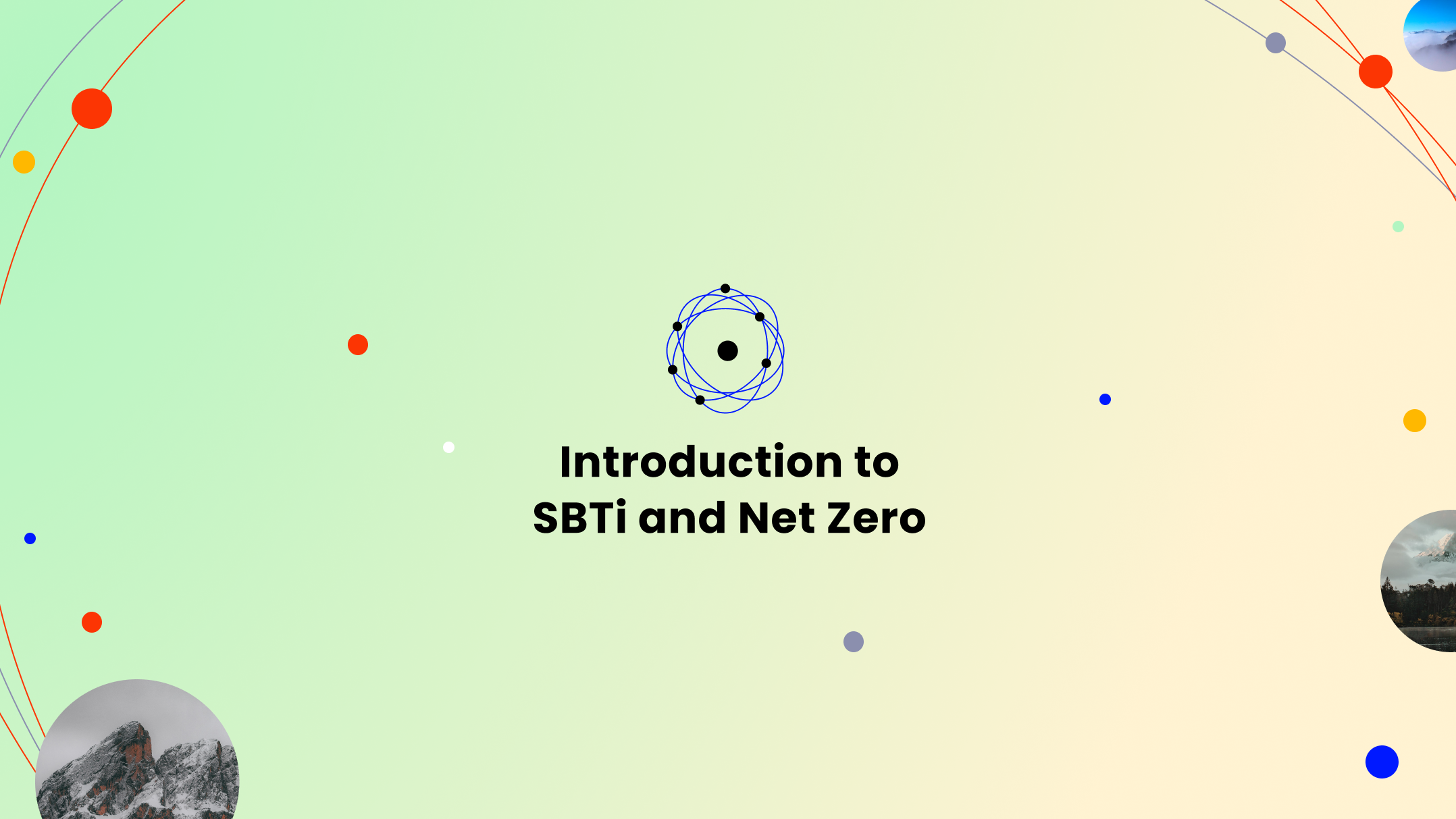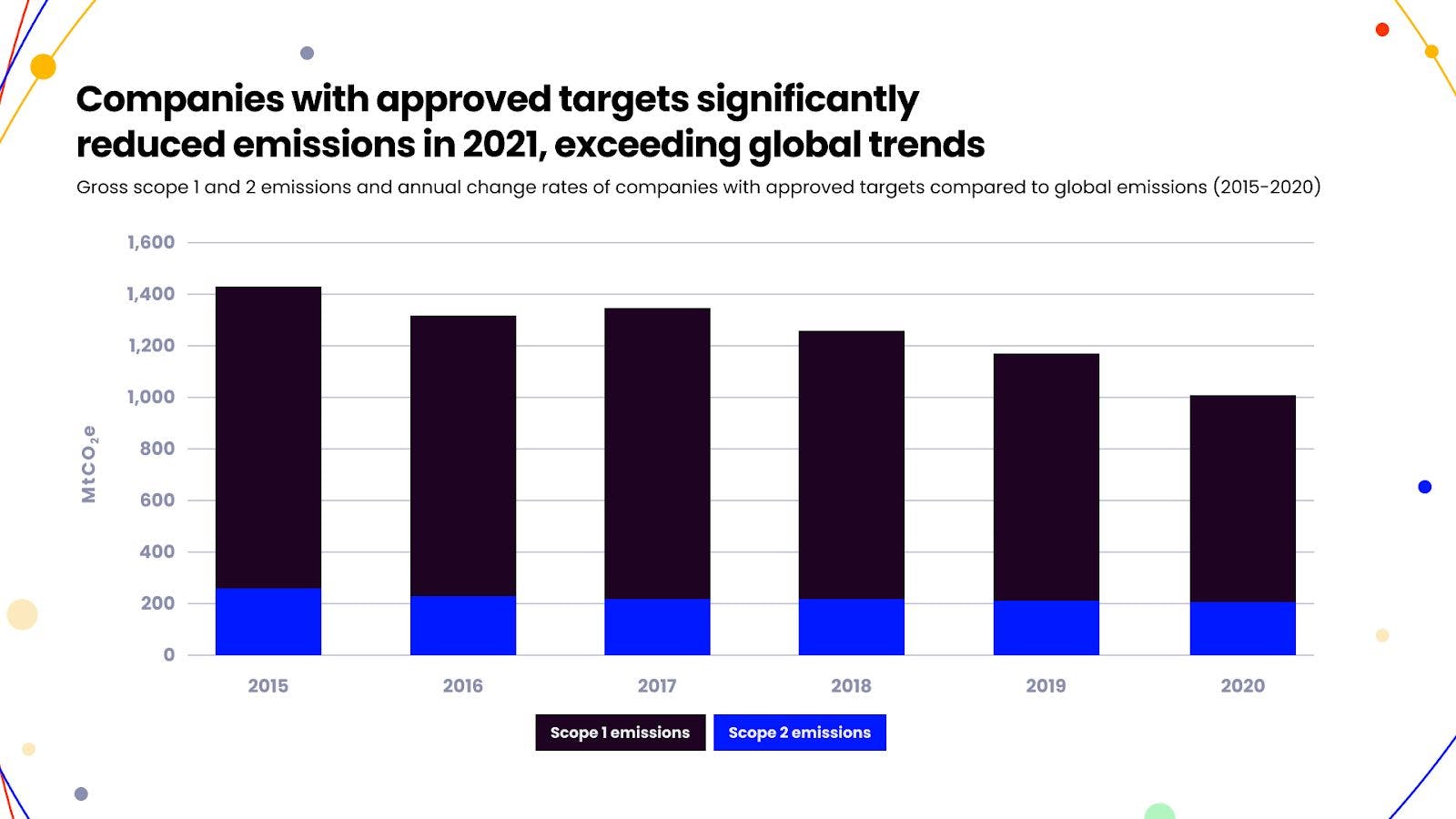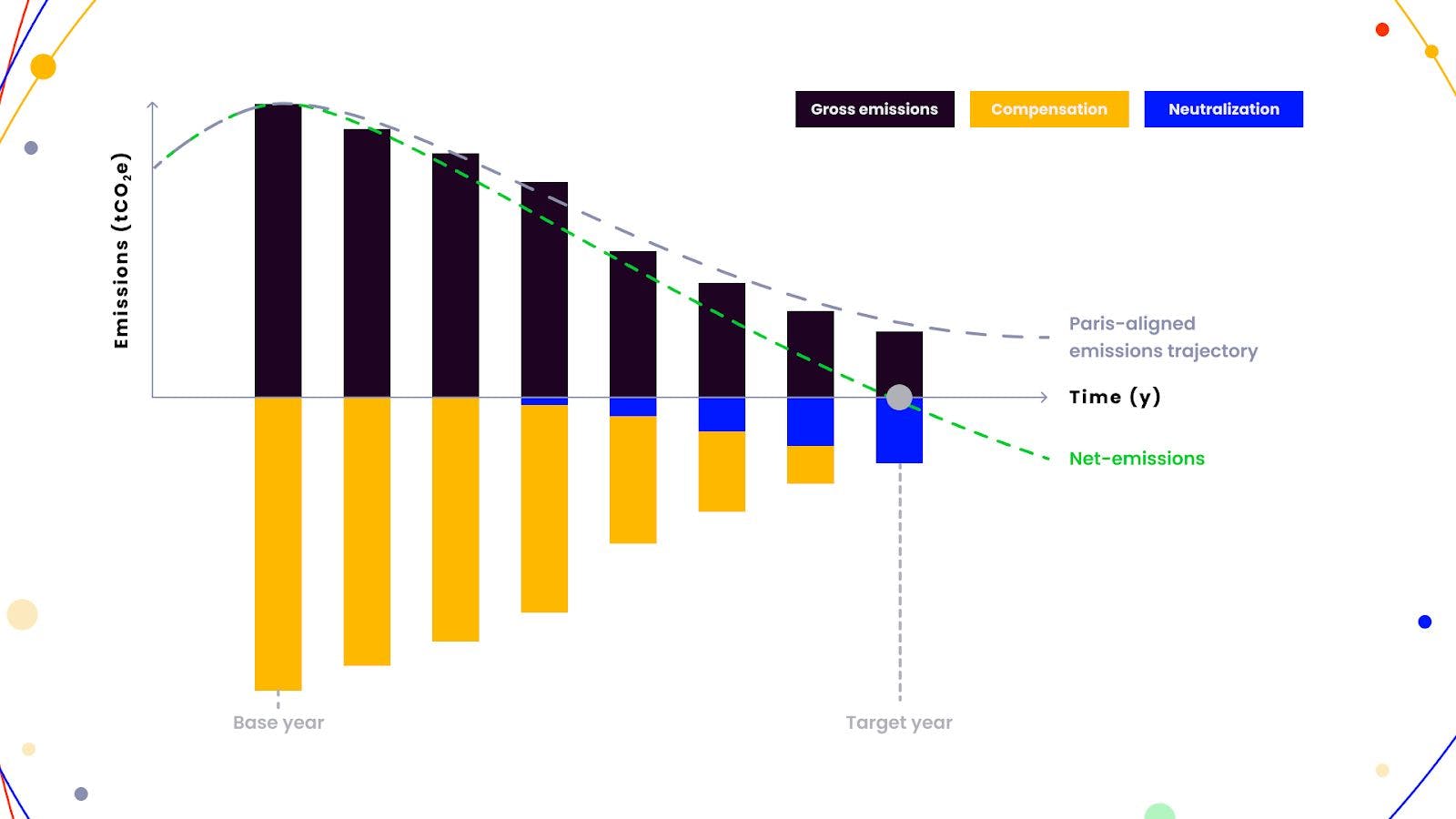
How your organization can meet its science-based emissions targets
May 3, 2023
The Science Based Targets initiative (SBTi) is a global organization that encourages and supports companies in setting science-based targets for reducing their greenhouse gas (GHG) emissions. The SBTi was launched in 2015 as a collaboration between CDP (formerly the Carbon Disclosure Project), the United Nations Global Compact, the World Resources Institute, and the World Wildlife Fund.
Science-based targets are GHG emissions reduction targets that are aligned with the level of decarbonization required to keep global temperature rise below 2°C above pre-industrial levels, as outlined in the Paris Agreement. These targets are based on the latest climate science and are considered to be ambitious but achievable.
Why are science-based targets useful?
Setting science-based targets within organizations can unlock several benefits for those organizations, as well as for our planet:
- Setting clear targets can help demonstrate an organization's commitment to sustainability and responsible business practices. This has multiple benefits, such as acting like a talent magnet for young, well-educated employees.
- Science-based targets can help drive innovation and efficiency within a company, as achieving ambitious emissions reductions targets may require new technologies, processes, or business models. These may lead to additional business opportunities.
- Following self-developed science-based targets can helpbuild resilience to the impacts of climate change, such as extreme weather events and social threats, by reducing a company's exposure to carbon-intensive activities and their associated financial risks.
Companies that commit to setting science-based targets through the SBTi are provided with guidance and tools to help them develop and implement their targets. The SBTi also reviews and approves companies' targets to ensure that they are consistent with current climate science.
Setting science-based targets for your organization
At the time of writing, the SBTi and its efforts reach roughly 2,600 companies worldwide. As an organization, setting science-based targets is not as difficult as one might expect, as the SBTi offers guidance for companies to set targets that are aligned with a 1.5°C future. The impact of such measures is noticeable immediately, as outlined in the image below. It highlights emissions reductions across companies that have been approved by the SBTi.

Source: [1]
For more information and to get your company started on setting its own targets, the SBTi offers a step-by-step process. This enables organizations to reduce their emissions gradually or go even further to reach Net Zero.
What is the Net-Zero Standard?
The Corporate Net-Zero Standard by the SBTi (also simplified as Net-Zero Standard) provides guidance, criteria, and recommendations to help companies establish Net Zero targets that will be verified by the SBTi. The primary goal of this standard is to offer a consistent and rigorous method for companies to create Net Zero targets that are consistent with scientific climate data.
Net Zero refers to achieving a balance between the amount of GHG emissions produced and the amount of GHG emissions removed from the atmosphere. This means that any remaining emissions are offset by activities that remove an equivalent amount of GHG emissions from the atmosphere. It requires a combination of emissions reductions and removals to achieve, with a focus on transitioning to renewable energy sources and reducing energy consumption.
The figure below outlines one possible Climate Positive path to Net Zero.

Source: [2]
The Climate Positive approach involves continued emissions reductions in tandem with carbon offset support. Compensation measures can include offsets from mitigation-type offsets in the preceding period, including renewable energy and/or forest conservation projects. Under such an approach, gross emissions slowly shrink year over year as the emission reduction actions defined by your organization start showing their effect.
Eventually, the last remaining emissions must be neutralized permanently by the target year in order for the company to be allowed to call itself Net Zero as defined by the SBTi. Complete neutralization can be achieved by permanent carbon removal techniques like afforestation or technologies such as Direct Air Capture.
The example of Nestlé
Several thousand companies have pledged to take action and reduce their emissions based on the recommendations of the SBTi. Let’s look at Nestlé as a case study of what science-based targets can look like when implemented in the real world. Under the guidelines of the SBTi, this multinational corporation has set the following targets:
- Reduce emissions in the near term to stay at or below the ambitious 1.5°C target as defined in the Paris Agreement. To achieve this, Nestlé is aiming for a 25% reduction in GHG emissions by 2025 and a 50% reduction by 2030.
- Commit to the SBTi’s Net-Zero Standard.
- Increase annual sourcing of renewable electricity from 40% in 2019 to 100% in 2025.
By setting distinctly defined parameters, Nestlé has laid out its path to a Net-Zero future and can establish clear business practices to reach these targets.
Your path to Net Zero
Clearly, organizations need time to shift their business operations to align with the SBTi’s Net-Zero Standard. Over the coming years, compensation via carbon credits will therefore be necessary to support your company on its journey to Net Zero.
In a sign of their centrality to the effort to stabilize the planet’s climate, the G7 energy ministers recently met in Japan to outline the principles that will underpin the high-integrity carbon markets necessary to our future.
High-quality carbon credits help offset emissions that are currently unavoidable and, according to the World Economic Forum, should play a role in companies’ climate action plans. Sourcing carbon credits can be difficult, however, as there are a number of market failures that make interacting and transacting within the market challenging.
Carbonmark’s role in helping you meet your science-based targets
Carbonmark provides a powerful platform for organizations—including those following a Climate Positive SBTi approach to Net Zero—to connect with project developers directly and source both carbon mitigation and removal-type offsets.
- Roughly 20 million carbon credits are available right now.
- You can buy, sell, and retire them instantly.
- Carbonmark offers zero-commission trading, almost completely eliminating fees.
Furthermore, there are a wide variety of carbon credit vintages and categories available from Carbonmark, including Blue Carbon, Forestry, Renewable Energy, Energy Efficiency, and Industrial Processing. Thus, whether you are looking to support projects restoring mangrove plantations in Myanmar or protecting forests in the Amazon, the options are almost limitless.
By using Carbonmark, companies can demonstrate their commitment to addressing the climate crisis by following the SBTi’s guidelines, undertaking compensation actions via carbon credits, and thereby ensuring a brighter future for us all.
Get started now on Carbonmark’s marketplace or contact us to find out more about how we can help you achieve your science-based targets.
Sources
[1] SBTi (2022) Annual Progress Report 2021. Available at: https://sciencebasedtargets.org/resources/files/SBTiProgressReport2021.pdf
[2] SBTi (2020) Foundations for Net Zero. Available at: https://sciencebasedtargets.org/resources/legacy/2020/09/foundations-for-net-zero-full-paper.pdf
Disclaimer:
Carbonmark (“Carbonmark”), its digital-assets, business assets, strategy, and operations, is for general informational purposes only and is not a formal offer to sell or a solicitation of an offer to buy any securities, options, futures, or other derivatives related to securities in any jurisdiction and its content is not prescribed by securities laws. Information contained in this blog post should not be relied upon as advice to buy or sell or hold such securities or as an offer to sell such securities. This blog post does not take into account nor does it provide any tax, legal or investment advice or opinion regarding the specific investment objectives or financial situation of any person. Carbonmark and its agents, advisors, directors, officers, employees and shareholders make no representation or warranties, expressed or implied, as to the accuracy of such information and Carbonmark expressly disclaims any and all liability that may be based on such information or errors or omissions thereof. Carbonmark reserves the right to amend or replace the information contained herein, in part or entirely, at any time, and undertakes no obligation to provide the recipient with access to the amended information or to notify the recipient thereof. The information contained in this blog post supersedes any prior blog post or conversation concerning the same, similar or related information. Any information, representations or statements not contained herein shall not be relied upon for any purpose. Neither Carbonmark nor any of its representatives shall have any liability whatsoever, under contract, tort, trust or otherwise, to you or any person resulting from the use of the information in this blog post by you or any of your representatives or for omissions from the information in this blog post. Additionally, Carbonmark undertakes no obligation to comment on the expectations of, or statements made by, third parties in respect of the matters discussed in this blog post.